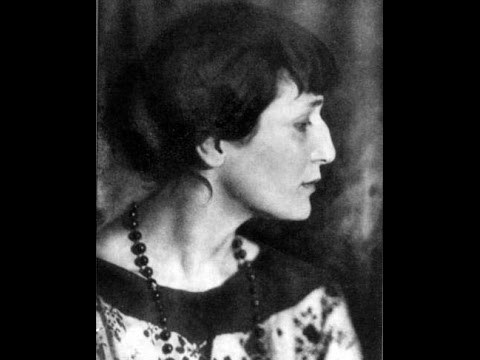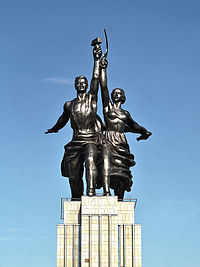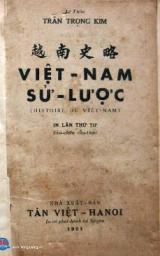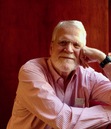Mark Scott Smith's Blog: Enemy in the Mirror, page 79
May 28, 2018
Memorial Day
Memorial Day 1946 – The ways of peace have not returned to us, and the results of war are still upon us. – Eleanor Roosevelt

MAY 30, 1946
NEW YORK, Wednesday—This is the first Memorial Day since the end of the war in the Pacific and yet in spite of that fact, many people will say to themselves on Memorial Day: “The world does not seem to be at peace as yet.” Everywhere there is restlessness. The ways of peace have not returned to us, and the results of war are still upon us.
In this country there will be parades and we will visit graves and cemeteries where lie those who have died for their country in previous wars, and most of us will pray that these years of restlessness may pass and that peace may come again to the world as a whole. I hope, however, that we will do more than pray, because it is going to require a great deal of work on our part to make of our own country the kind of a country which can back the United Nations and lead the world in its struggles to a peaceful future.
When we visit the graves of our soldiers in this country I hope we will think of the cemeteries all over the world where lie our men who died both in this world war and the last, and I hope the panorama of names representing every nation in the world will recall to us that in the United States, our citizens are citizens of the world.
We have no room in this country for racial prejudice because our people come from every race and were brought together by an idea and are made strong as a nation by the fact that we believe in certain democratic ideals. There is no room in this nation for religious prejudices either. Men of all races and religions fought the war and died side by side. The men who came back and are now struggling together to make the peace, have a right to equal economic opportunity, to equal justice before the law and to equal participation in our government. We are all citizens of the United States and as such dedicate ourselves on Memorial Day to an effort to give to all our soldiers the returns that they are entitled to for the sacrifices which they have made. As far as possible, we must insist that our government try to give them the housing and the education which we promised them and then forgot to plan for. Our government must see to it that they have jobs, and above all, that medical care which they may need for many years to come, is available at all times.
On this Memorial Day too, we might remember to shed a tear for the women in other lands who mourn their dead and their sacrifices, and who perhaps have less cause for hope of better things in the near future than we have. Let us on this Memorial Day hold out a helping hand to all women throughout the world and agree to cooperate with every agency of our government so that another Memorial Day may see us all more securely established in a peaceful world.
____________________

Memorial Day 1946 by Andrew Wyeth
The post Memorial Day appeared first on Enemy in the Mirror.
May 24, 2018
William Carlos Williams
This is a scene from the charming 2016 film Paterson (96% rating on Rotten Tomatoes) about a bus driver and erstwhile poet named Paterson who lives in Paterson, New Jersey with his wife who dreams of being a country music star and opening a cupcake business.
This Is Just To Say
By William Carlos Williams – 1938
I have eaten
the plums
that were in
the icebox
and which
you were probably
saving
for breakfast
Forgive me
they were delicious
so sweet
and so cold

In 1926, William Carlos Williams wrote an 85-line poem entitled Paterson referring to that city in New Jersey as James Joyce had to Dublin, Ireland in his book Ulysses. In 1946 he published the first book of his epic poem Paterson that consisted of five books published separately in 1946, 1948, 1949, 1951 and 1958. Williams won the National Book Award for Poetry in 1949.
“We sit and talk,
quietly, with long lapses of silence
and I am aware of the stream
that has no language, coursing
beneath the quiet heaven of
your eyes
which has no speech”
― William Carlos Williams, Paterson
The post William Carlos Williams appeared first on Enemy in the Mirror.
May 21, 2018
Blue Angels
The Chief of Naval Operations, Admiral Chester W. Nimitz, ordered the establishment of the Blue Angels flight demonstration team in 1946.
The Blue Angels team flew the Grumman F6F Hellcat in 1946, the more powerful Grumman F8F Bearcat (1946 to 1949), the Grumman F9F Panther Jet (1949 to 1955), the Grumman F9F-8 Cougar (1955 to 1957), the Grumman F11F-1 Tiger (1957 to 1968), the McDonnell Douglas F-4J Phantom II (1969 to 1974), the Douglas A-4J Skyhawk (1974 to 1986). Since 1986 the team has flown the McDonnell Douglas F/A-18 Hornet.
The Blue Angels is the second oldest formal flying aerobatic team in the world, after the Patrouille de France formed in 1931.
The post Blue Angels appeared first on Enemy in the Mirror.
May 17, 2018
Song of the South
Song of the South was produced by Walt Disney in 1946 as a live-action/animated musical based on African-American folktales compiled by Joel Chandler Harris in 1881 in the book Uncle Remus, His Songs and His Sayings: The Folk-Lore of the Old Plantation.
The story follows a 7-year-old boy as he visits his grandmother’s southern plantation during the Reconstruction Era. Befriending a worker named Uncle Remus, the boy hears about the adventures of Br’er Rabbit, Br’er Fox, and Br’er Bear.
The Song of the South has received significant criticism for being insensitive in its portrayal of idyllic life on the plantation and offensive for its use of black stereotypes and vernacular
The song Zip-a-Dee-Doo-Dah won the 1947 Academy Award for Best Song and James Baskett received an Honorary Academy Award for his performance as Uncle Remus.
The post Song of the South appeared first on Enemy in the Mirror.
May 14, 2018
Mensa Society
The Mensa Society was created in 1946 as a group for people with IQ scores in the top 2% of the general population to share ideas and activities. The society’s membership has reached > 120,000 global members.
Mensa has three stated purposes:
to identify and foster human intelligence for the benefit of humanity
to encourage research in the nature, characteristics and uses of intelligence
to promote stimulating intellectual and social opportunities for its members.
The Latin word “mensa” means table; “mens” means “mind;” and “mensis” means “month.”
“Mensa” therefore suggests a monthly meeting of minds around a table.
The odds of having an IQ ≥ 140 are 1 in 261. The odds of having an IQ ≥160 are 1 in 31,560.

People with the highest IQs ever recorded (in ascending order)
Stephen Hawking (IQ – 160)
Albert Einstein (IQ – 160 – 190)
Judit Polgar (IQ – 170)
Philip Emeagwali (IQ – 190)
Garry Kasparov (IQ – 194)
Christopher Michael Langan (IQ – 190 – 210)
Edith Stern (IQ – 200+)
Kim Ung-Yong (IQ – 210)
Christopher Hirata (IQ – 225)
Marilyn Vos Savant (IQ – 228)
Terence Tao (IQ – 225 – 230)
William James Sidis (IQ – 250-300)
The post Mensa Society appeared first on Enemy in the Mirror.
May 10, 2018
Georgia O’Keefe
Georgia O’Keeffe (1887–1986), a pioneer of American modernism, is renowned for her paintings of flowers, skyscrapers, animal skulls and southeastern landscapes.
New York City with Moon (1925)

Moving to New Mexico after the death of her photographer husband Alfred Stieglitz, she was inspired to create numerous landscape paintings. Some of her most famous artwork involved large-scale close-ups of flowers such as:
Petunia No. 2 (1925)

Black Iris (1926)

Oriental Poppies (1928)

Cow’s skull (1931)

Patio with black door (1945)

In the 1940s, O’Keeffe’s work was displayed at the Art Institute of Chicago and at the New York Museum of Modern Art, where it was the museum’s first retrospective of a female artist’s work.
The post Georgia O’Keefe appeared first on Enemy in the Mirror.
May 7, 2018
20th Century Russian literature
In the nineteenth century, the Golden Age of Russian literature included Romanticism which emphasized imagination and emotion in contrast to the primacy of reason during the Enlightenment. Examples of Russian Romantic novelists are Aleksandr Pushkin and Mikhail Lermontov. The 19th century ended, however, with a dominance of Russian Realist novelists, such as Ivan Turgenev, Fyodor Dostoevsky and Leo Tolstoy.
The first two decades of the 20th century in Russian literature have been called the Silver Age. Famous for poets such as Anna Akhmatova, Marina Tsvetaeva, Osip Mandelstam and Boris Pasternak, the Silver Age ended after the Russian Civil War.
A land not mine, still
by Anna Akhmatova
English version by Jane Kenyon
A land not mine, still
forever memorable,
the waters of its ocean
chill and fresh.
Sand on the bottom whiter than chalk,
and the air drunk, like wine,
late sun lays bare
the rosy limbs of the pinetrees.
Sunset in the ethereal waves:
I cannot tell if the day
is ending, or the world, or if
the secret of secrets is inside me again

After the 1917 Russian Revolution and subsequent founding of the Soviet Union in 1922, Russian literature was radically changed.

During a period of relative openness in the 1920s, there was a brief proliferation of avant-garde literature groups such as the Oberiu Movement that included the famous Russian absurdist Daniil Kharms. By the late 1920s, the group was labeled “literary hooliganism” and in the early ’30s, with all dissidence strongly repressed, many of its members were arrested.

In the 1930s, Socialist realism became the only officially approved style of Russian literature. Novelists Maxim Gorky, Mikhail Sholokhov, Aleksei Nikolaevich Tolstoy and poets Konstantin Simonov and Aleksandr Tvardovsky were the most prominent representatives of the official Soviet literature.

Some resident authors such as Mikhail Bulgakov and Boris Pasternak remained perilously non-compliant with official ideology.
Émigrés including the poets Georgy Ivanov, Georgy Adamov and Vladislav Khodasevich as well as novelists Ivan Bunin, Gaito Gazdanov, Mark Aldanov, and Vladimir Nabokov flourished in exile.
The post 20th Century Russian literature appeared first on Enemy in the Mirror.
May 3, 2018
Post-WWII Labor Strikes
In 1946, a year after WWII ended, >5 million American workers went on prolonged strikes in numerous industries and public utilities. The American strike wave of 1945–1946 became the largest series of labor strikes in American history.
During WWII, the National War Labor Board granted unions closed shop agreements in exchange for maintaining labor discipline throughout the war. Throughout the war, various wildcat strikes over work discipline, company policy or firings did occur, but they were not prolonged or massive.

After the war, demand for increased wages (no longer frozen by the Stabilization Act of 1942) lead to the onset of larger strikes.
American Labor Strikes in 1945
10,500 film crew workers
43,000 oil workers
225,000 United Auto Workers
American Labor Strikes in 1946
174,000 electric workers
93,000 meatpackers
750,000 steel workers
340,000 coal miners
250,000 railroad engineers and trainmen nationwide
120,000 miners, rail and steel workers in the Pittsburgh region
Other strikes included railroad workers and “general strikes across the country.
~4.3 million workers participated in the strike wave of 1945-46.

In 1947, over President Truman’s veto, Congress passed the Labor Management Relations Act (Taft-Hartley Act) that restricts powers and activities of labor unions. The act is still in effect today.
The post Post-WWII Labor Strikes appeared first on Enemy in the Mirror.
April 30, 2018
Man’s Search for Meaning
In 1946 the neuro-psychiatrist Viktor Frankl (1905-1997) chronicled his experience in Nazi concentration camps in his best-selling memoir Man’s Search for Meaning.
In this book, Frankl described how finding personal meaning allowed him to survive internment in Nazi concentration camps (Theresienstadt, Auschwitz, and two camps affiliated with Dachau (Kaufering and Türkheim).
After the war, Frankl established a new school of existential therapy known as logotherapy that maintained man’s underlying motivation, even in in life’s most difficult circumstances, is a “will to meaning.” Logotherapy utilizes several techniques intended to enhance a patient’s quality of life: (a) paradoxical Intention, where the therapist encourages the patient to briefly intend or wish for precisely what they fear (b) dereflection, where the therapist diverts the patients away from their problems towards something else meaningful in the world and (c) enlarging the patient’s discernment of meaning in at least three ways: through creative, experiential or attitudinal values.

The post Man’s Search for Meaning appeared first on Enemy in the Mirror.
April 26, 2018
20th Century Vietnamese Literature

Before the 17th century, official Vietnamese documents, literature and poetry were written in Classical Chinese.

The modern written Vietnamese language utilizes Latin script with additional accent marks (diacritics) and characters joined together (digraphs). Mandated by the French colonial government in the early 20th century, chữ quốc ngữ became the written language of French Indochina. After declaring independence from France in 1945, the Empire of Vietnam, a short-lived client state of Imperial Japan, successfully promoted increased literacy and chữ quốc ngữ, remains the written language of modern Vietnam
The of the 20th century were the Tu Luc Van Doan (Independent Literary Group) and the Tho Moi (New Poetry) school. Soon, differences in defining Vietnamese nationalism lead to right and left extremism. With the 1936 establishment of the leftist Popular Front in France, and the success of the Viet Minh in 1945, Communist writers in the north began to emulate the Socialist Realism of the USSR.

In 1920, Việt Nam sử lược (Outline History of Vietnam) written by the historian by Trần Trọng Kim was the first history text published in chữ quốc ngữ, Although considered the standard history text in South Vietnam, it has been criticized by Communist historians, who argue that several Communist heroes have been misrepresented.

Published in 1936, the controversial novel Số đỏ (Dumb Luck) by Vũ Trọng Phụng was banned in Vietnam until 1986. A bitter satire of the late colonial era, the novel follows the social rise of a red-headed vagabond in Hanoi in the late colonial era.
Here is a
________________________

http://www.lovethispic.com/image/1254...
The Sound of Autumn by LƯU TRỌNG LƯ (1939)
English Translation by Nhien Nguyen MD
Don’t you hear Autumn
Under dim sobbing moon?
Don’t you hear distress
The image of a warrior
In the heart of his lonely wife?
Don’t you hear Autumn forest
Scattered sounds of falling Autumn leaves
A bewildered amber deer
Steps on dry amber leaves?
________________
The post appeared first on Enemy in the Mirror.
Enemy in the Mirror
I began by posting events around the turn This website www.enemyinmirror.com explores the consciousness, diplomacy, emotion, prejudice and psychology of 20th Century America and her enemies in wartime.
I began by posting events around the turn of the 20th century as I was researching my first novel about the Pacific War. I continued through WWII for my second novel about the Battle of the Atlantic. Now I am beginning to look at the Cold War as I gather information for my next novel about the Korean War. ...more
- Mark Scott Smith's profile
- 7 followers



